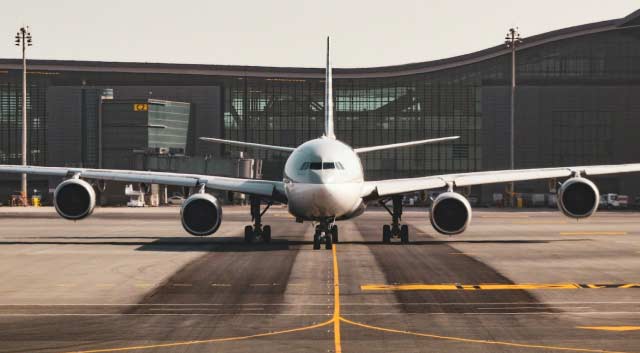Tips for Traveling in Hurricane Zones During Hurricane Season
There is an ever-present summertime danger that has the capacity to derail your well-thought-out vacation plans: hurricane season. And with some of the most popular places to visit – the Caribbean, Florida, Hawaii, and Mexico – prone to hurricanes, preparing for hurricane-related travel risks are a great way to help protect your travel investment.
Also read: What you Need to Know About Hurricane Travel Insurance
What, when and where is hurricane season?
Hurricane season is the time of year when hurricanes and tropical storms are most likely to occur.
The Atlantic hurricane season runs from June 1 through November 30, peaking in mid-August to late October. The Eastern Pacific hurricane season starts a bit earlier, in May and goes through November.
“An average Atlantic hurricane season has 14 named storms, 7 hurricanes, and 3 major hurricanes,” according to the National Oceanic and Atmospheric Administration (NOAA). And, the Eastern Pacific Season averages even more.
To be a hurricane, winds must be greater than 74 mph, whereas a tropical storm's windspeed must be greater than 39 mph.
Hurricanes are most likely to be encountered along the Eastern coast of the U.S. (from Maine to Georgia), the Gulf Coast (Florida to Texas), Hawaii, Mexico, the Caribbean, and Central America, according to the NOAA.
The Weather Channel’s Hurricane News section is a good place to see if any storms are on the horizon and to get an idea of what the hurricane season has in store for travelers.
The Colorado State University Tropical Meteorology Project warns: “As is the case with all hurricane seasons, coastal residents are reminded that it only takes one hurricane making landfall to make it an active season for them. They should prepare the same for every season, regardless of how much activity is predicted.”
Want to know what the probability is that a hurricane or named storm will make landfall in your state, or one you’re traveling to this season? See our Hurricane Risk Map.
Hurricanes and travel protection
A travel protection plan could make the difference between recouping some or all of your trip costs if a hurricane causes you to cancel or disrupts your trip.
Our travel protection plans provide coverage for a number of weather-related events you might encounter during hurricane season, such as mandatory hurricane evacuations, flight delays and/or cancellations, your personal home being made uninhabitable by a hurricane, or even medical expenses. With all of our plans you also get access to our 24/7 Travel Assistance Services Hotline.
Always travel with a hard copy of your Plan Documents so you can contact your insurance and assistance provider, even if you can’t access the internet.
Once a storm is forecasted or it becomes evident that a storm will impact travel to your destination, the event is considered foreseeable. This means the protection plan can no longer be purchased to cover losses that you might suffer from that specific storm. This is another reason it could be beneficial to purchase travel protection sooner rather than later.
Travel tips for hurricane season
Travelers seeking more information about how a hurricane can affect travel plans may find comfort in knowing these tips before their next departure.
- Hurricanes can disrupt flights and you may be separated from your baggage. You can minimize this inconvenience by packing necessities in your carry-on bags. Also, our travel protection plans may reimburse you if you need to buy necessary items if your bags are delayed during your trip for more than the amount of hours specified in the plan you purchased.
- It's tempting to completely unplug on vacation, but advance warning about hurricanes is not always guaranteed. We recommend you keep up-to-date on the latest information about possible storms before and during your trip.
- If you're truly concerned about a hurricane impacting your travel plans, consider taking a cruise to your destination as they are more flexible than flights and can detour to alternative ports.
Also read: The 6 Top Travel Emergencies and How To Deal With Them
Planning ahead for a storm
If your vacation destination is located in a common hurricane zone, consider learning how to prepare for an emergency in case you unexpectedly get caught in a storm’s path.
FEMA has created a dedicated website that describes how to accomplish the following three essentials.
- Make a plan
- Create a kit
- Know your resources
Families or groups traveling together should make an emergency plan to determine where they are going to meet and how they will get there. Additionally, they should check with their accommodation provider to see if they can access an emergency kit with a radio, water, food and other survival basics, if necessary.
When it comes to resources, there are many websites and social media tools available. Before departing on any vacation during hurricane season, travelers may want to make a list of resources so they can stay informed about the weather and evacuations.
FEMA, NOAA and regional resources, including state emergency response team sites like Florida's, are a good place to start. Travel agents, vacation rental owners or hotel management can also offer their expertise.
Tips if a Storm Hits
So, go ahead and book that dream seashore vacation, even during hurricane season. There’s nothing as relaxing as lounging at the beach. Just be aware of the possibility of hurricane-related snafus and the peace of mind that comes from preparing for them.
Sources:
1. National Oceanic and Atmospheric Administration
Map Data Source: Colorado State University's Tropical Cyclone Impact Probabilities report
B005832311


